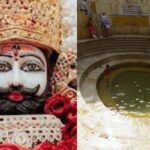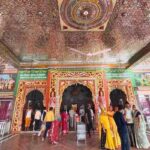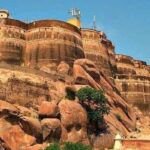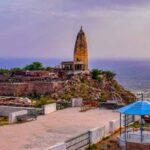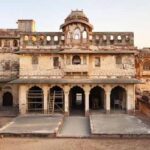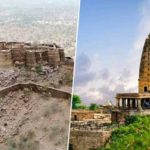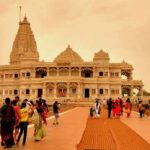Khatu Shyam Ji Mandir is a popular religious destination for Rajasthan’s Hindu pilgrims. According to Hindu mythology, Khatu Shyamji is an alias of Barbarik, who was a son of Ghatotkach in the Treta Yug. Khatu Shyamji is also thought to be a Lord of Kalyug, indicating that he is Lord Vishnu’s tenth avatar. In the form of Lord Krishna, Khatu Shyamji is worshipped. Khatu Shyamji’s other names include khatu naresh, lakhdatar, baba shyam, sheesh ro dani, teen baan dhari, and so on.
Khatu Shyamji’s temple is entirely constructed of Makrana White Marble, making it an architectural marvel. Makrana marble is India’s finest marble, and it is used to build many of the country’s most prominent temples. The beauty of this place is reflected by the beautiful mythological paintings painted on the large prayer hall known as Jagmohan hall. Mangala Aarti, Shringaar Aarti, Bhog Aarti, Sandhya Aarti, and Sayana Aarti are the five aartis performed daily to Khatu Shyam Ji Mandir.
Near the Khatu Shyam temple is Shyam Kund, a holy tub, Khatu Shyamji’s head was recovered from this spot. It is believed that taking a bath in this pond would cure all of the devotees’ ailments and restore their health. Shyam Bagicha is a blessed garden near the temple where flowers are harvested for offering in the temple. Gaurishankar Temple is situated next to Khatushyamji Temple, which is a Shiva Temple.
All of these factors combined to make this a must-see tourist destination where you can experience authentic Rajasthani customs and cultures. The holiness and dedication of this location enchant travellers. The markets of Khatu Shyam Ji Mandir also sell delicious Rajasthani foods, handcrafts, jewellery, and much more.
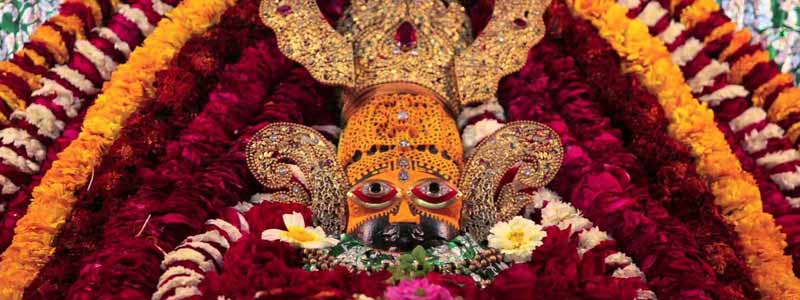
The Story Behind Khatu Shyam Ji Temple, Rajasthan
Barbarika‘s prowess was said to be unprecedented before the Mahabharata war began, according to Hindu mythology. He had made the decision to support the weaker side in order to stay just, a decision that would have resulted in the defeat of both sides, leaving only Barbarika alive. It is said that Shree Krishna, in order to prevent such disastrous consequences, Barbarika was asked for his head (sheesh daan), which he happily agreed to. Shree Krishna was so pleased with Barbarika’s devotion and great sacrifice that he granted him a boon, according to which Barbarika would be known as Krishna’s own name, Shyam Ji, in the kaliyug (present times) and worshipped in his own form Khatu Shyam Ji Mandir.
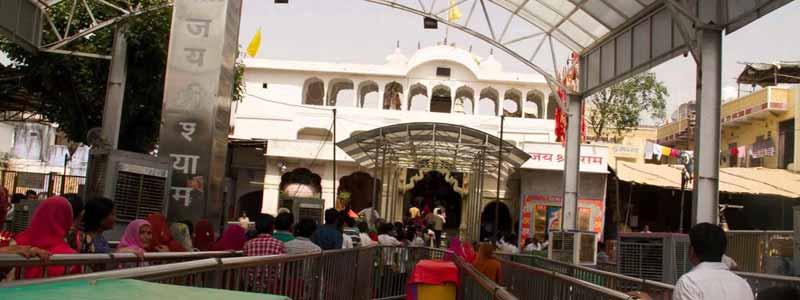
Building the Khatu Shyam Mandir in Rajasthan
Shree Krishna blessed Barbarika‘s head after the battle and drowned it in the Rupawati River. The head was discovered buried in the village of Khatu in Rajasthan, at a location that had been unknown before the kaliyug started. When a cow was crossing the burial point, her udders began spontaneously spouting milk. Surprised villagers dug up the site, and the buried head was discovered. The then-Khatu king, Roopsingh Chauhan, had a dream in which he was asked to mount the head inside a temple. This was the time when the temple was constructed and the head was put inside.
The Architectural Prowess of Khatu Shyam Mandir
The temple, which is built of white marble, is a real architectural marvel. Aside from being a popular destination for devotees, many people come to the temple to marvel at the structure’s beauty. Jagmohan is the name of the large prayer hall, which is surrounded by elaborately painted mythological scenes on the walls. The entry and exit gates, on the other hand, are made of marble, The sanctum sanctorum’s shutters are covered with a stunning silver sheet that adds to the temple’s grandeur, with marble brackets that display ornamental floral designs, Khatu Shyam Ji Mandir.
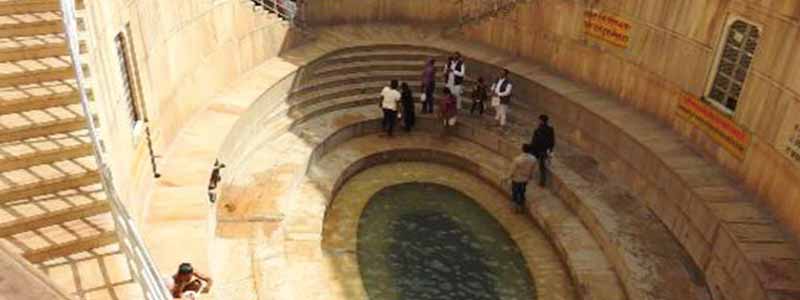
Bathing in the Kund near the Temple of Khatu Shyam Ji, Rajasthan
The Shyam Kund is a sacred pond located near the temple. This is said to be the location where Khatu Shyam Ji Mandir head was recovered. A common belief among devotees is that taking a dip in this pond will cure one’s illnesses and restore one’s health. People taking annual dips in the pond aren’t unusual when there’s a lot of devotional fervour in the air. Bathing at the Shyam Kund during the Phalguna Mela Festival, which takes place every year, is also thought to be particularly beneficial.
The Timings of the Temple for Khatu Shyam Ji in Rajasthan
- Winters: The temple is open from 5.30 am to 1.00 pm and from 5.00 pm to 9.00 pm
- Summers: The temple is open from 4.30 am to 12.30 pm and from 4.00 pm to 10.00 pm
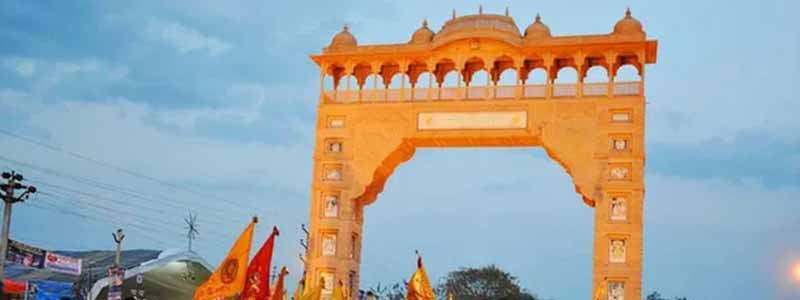
The Aartis performed at the Khatu Shyam Ji Mandir
There are 5 aartis that are performed daily at the Khatu Shyam Ji Mandir. The devotional ambiance and the serenity brought forth by the chanting and the aarti is incomparable, and if you were to plan a visit to this beautiful temple, you should try to attend one of these aartis.
- Mangala Aarti: This is performed early in the morning when the temple opens its gates to the devotees.
- Shringaar Aarti: As the name suggests, this is the time when the Khatu Shyam Ji’s idol is grandly ornamented, accompanied by an aarti.
- Bhog Aarti: The third aarti of the day, it is performed at noon when bhog or prasadam is served to the lord.
- Sandhya Aarti: This aarti is performed in the evening, at the time of the sunset.
- Sayana Aarti: Before the temple is closed for the night, sayana aarti is performed.
There are two special hymns that are chanted at all these times. These are the Shri Shyam Aarti and the Shri Shyam Vinati.

